Movement Towards Change
by Steve Opalenik
One half of a "Munchie Mania" (mozzarella sticks, onion rings, chicken tenders), a large order of chicken quesadillas, double fries (hold the salad/coleslaw) and a coffee shake. Sounds like the description of enough food for a group of friends, but it’s not. In fact it was something quite different—my dinner, twice a week, from 2000-2006. Add frequent orders of calzones, wings, and pizza, a peppering of beer, alcohol, and wine, and you have a caloric obesity time-bomb. At my worst, I tipped the scale at 220lb on my 5’ 10" frame. I was depressed and possibly had a heart murmur. I’d walked the fine line between being overweight and obese for most of my life, but during my college years it got pretty hairy. I was stuck in a looping cycle of eating my emotions.
I was also actively convincing myself that what I saw in the mirror wasn’t really my size, but that the mirror was defective. I kept telling myself that I’d be active tomorrow, and lose the weight with no problem. I thought it wouldn’t be hard since I used to wrestle in high school. Weight fluctuations were something that I was used to. But, it never happened, I just kept ballooning and lying to myself about it. I was in denial, and didn’t see the problem.
Two things changed the situation. The first thing was my first 5k race (oddly enough themed "The Hot Chocolate Race"), and the second, was my brother. I won’t bore you with the details of the race, but as you can probably guess, I got my ass handed to me. The race taught me that I had a whopper of a problem. It forced me to self-assess, and made me realize that the mirrors and the scales weren’t wrong, my perspective was. But even after the race, I still had a hard time finding the motivation to resolve the problem, and would often forget about it. ...At least until a flash of a memory from the race would hit me while I was biting into a slice of pizza. For about half a heartbeat I was again motivated to make a change.
Enter my brother. He gave me my first book on
calisthenics, and spoke with me about the importance of not just exercising, but making changes in my life. He was—and is—the Obi-wan to my Luke, and I often consider him my "Sage on Dial". Through his support and knowledge of the human body and how it works, I was able to face my problem head on. I began to plan to make a change. But for the change to last, I realized that I had to adjust my perspective and approach to health—and not just jump on the most popular fad bandwagon. I acknowledged my problem, made a plan to address it, and followed through consistently and tenaciously. I dropped the weight, and never looked back.
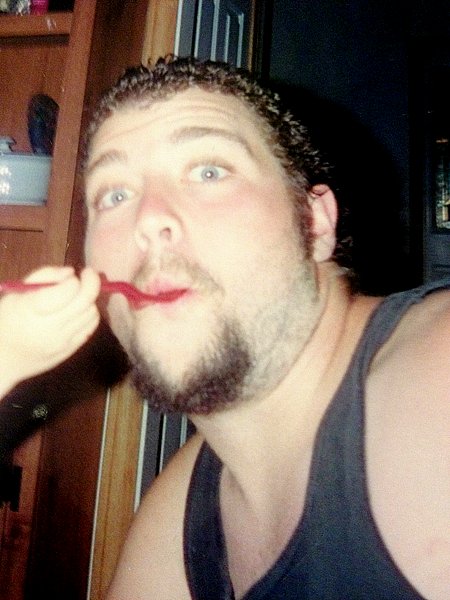
It wasn’t just a lack of knowledge and positivity which kept me from resolving my problem, the lack of acknowledging and addressing the problem kept me stagnant. Positivity and a "can do attitude" are key factors towards making a lasting change, but don’t get me wrong, they aren’t the only ones. Plenty of motivated individuals still fail at their goals and give up. But what’s most important is how you approach your goal after the failure, this makes all the difference in the path you walk. Positivity and motivation are important steps towards achieving change, but they aren’t the only steps.
My own journey motivated me to choose a career focused on helping others through similar processes of addressing their own needs. Over the last nine years, I have established myself as a mental health counselor and
personal trainer. Through counseling individuals struggling with making changes in their lives, I began to see patterns that mimicked my own past problems and needs. I studied these carefully, and began to work with these individuals to help them make the steps towards change. I was able to break the process down into individual steps by using concepts from motivational interviewing and the theories of change models as a basis. I worked with these clients where they were in the cycle, and helped motivate them to address their needs while working towards a positive change. Whether it’s related to making a physical change (weight loss, health changes, dieting) or a behavioral change (substance abuse, social engagement, managing depression); each step is designed to bring you closer to realizing your own potential.
The following are four steps towards achieving a lasting change.
Acknowledge a need for change:
The first step towards change is realizing that there is a need or the potential for change itself. Deep down I knew I needed to change, but that rationale was hidden behind disbelief and self-doubt. I constantly reinforced the idea that I was fine, and that things would happen of their own accord. To begin to make a change, there must be a clear moment when you can strip yourself bare (literally and figuratively) and face the hard truths.
This first step is one of the toughest steps to take, and why most people don’t follow through. If you complete this step correctly, you will shift your perspective towards achieving a better reality for yourself. You won’t just jump on a bandwagon because it’s the "popular thing to do" or because it is what others want you to do. Instead you will face the grim and gritty reality, your fears and concerns. Acknowledging your problem will motivate you to move forward and shift your perspective towards making a change in your life. This difference is why fad diets and "new and exciting workout regimens" never really amount to anything significant. They are just a quick fix, and usually just hide the problem rather than address the need to change it.
Making a game plan:
After you acknowledge the need for change, you must begin contemplating how to achieve it. This step can seem more confusing than organic chemistry because there are multiple moving parts. It is also steeped in revision. In other words, if you’d never cooked before, but decided to become an awesome baker, you might start off by trying to learn how to make your favorite dessert. Makes sense, right? If you want to learn how to bake, it makes sense to bake what you like. But without any basic knowledge of baking—and if your favorite dessert happens to be baked Alaska—then you are setting yourself up for failure.
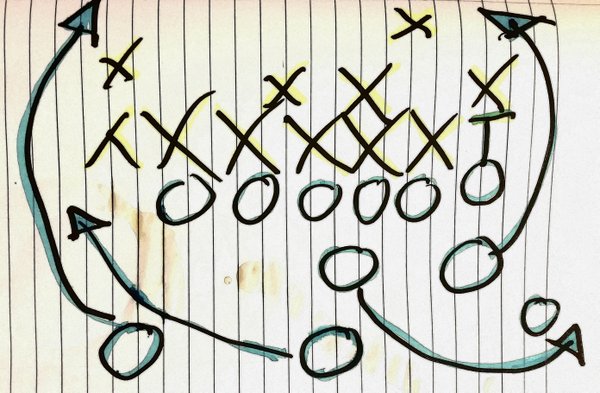
It is important that to be realistic with your planning in this step. That does not mean you can’t have lofty goals and ambitions, but it does mean that you must assess your current capabilities, and make a game plan that functionally works within them. It can be overwhelming, so don’t lose heart if you have to revise your game plan from time to time. The four steps can be cyclical in nature, and you may find yourself needing to regress to the previous step to make adjustments.
Kung Fu Grip It (Action):
If G. I. Joe taught me anything, it’s that having a kung-fu grip is important to a person of action. It’s important to bring your kung-fu grip to this next step, the action step. This is probably the most glamorous part of your quest for change. You've acknowledged your problem, you've made a game plan, and now all you have to do is put that plan into action. I like to call this the "beach muscle" stage of change. You are out there being active, making a change, feeling good about it and showing the world that you are working on bettering yourself. You are on display for all the world to see, and actually taking control over the problem that you have been hiding from for all those months or years. You’re making a great step forward, and physically enacting the change in all you are doing. By taking this step, you are making a commitment to yourself, and are generating motivation with every move forward. The most important part of this step is consistency, following through, and implementing the plan you made in the previous step. It’s exciting and you will find that your motivation will keep you moving forward for some time.
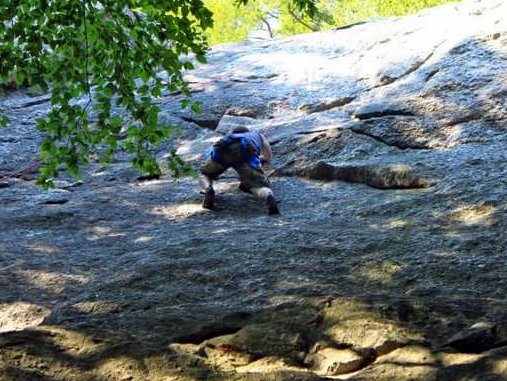
Hold yourself accountable for following the plan, and make adjustments as needed. You haven’t failed if you have to step back, reconsider your game plan, and make adjustments. It’s important to be realistic with your action planning, don’t try to achieve your whole goal in the first day or week. Instead, look at the practice of putting your game plan into action, schedule the steps of the game plan, and adjust as needed. Have others help you stay motivated, and make an effort to actively carve out the time to work on meeting your needs.
Keeping Up the Good Fight (Maintaining):
If the action step is the "beach muscle" of the change process, then the
maintenance step is the "stabilizing muscle". So far, the previous steps that we have reviewed have probably been familiar. They’re part of the common "gym frenzy" that happens every January. That same frenzy plagued me for years. I often would think that I was addressing a need or problem by saying that I would lose a few pounds by buying a gym membership and working out. But I would lose patience, time, or motivation and would go right back to my old lifestyle of food, alcohol, and laziness. For a change to last, you must maintain your game plan until the change is made, or your problem has diminished—then you re-address your need, and make a new game plan.
In the months after January, most people lose motivation and interest—but begin creating excuses. You might go from an excited, "honeymoon" state where everything is going well and you are super motivated to feeling bored. Excuses about a lack of time, funds, or even needs will start to pop up. You will start to push off your goals for more easily attainable needs or comforts, and before you know it, you are back at the beginning. You might even begin making yourself blind to your problems and needs once again. I get it, I was there, it’s easier to come home from work, sit on the couch, and eat mindlessly than to come home, strap on your shoes and go for a run. But the only way to actually shift your perspective and
work towards changing your life is to thrive on the challenge of the process, and not focus solely on the affirmation and achievement of the tangible trinkets.
Five major techniques can help you stay motivated at the fourth stage of the game. By utilizing these supports, you can better maintain your game plan, and build consistency towards achieving lasting change.
1) Create goals with a global impact. Work towards goals that not only affect you, but can have an impact on others within your community; it is easier to stay motivated if your goals have a multifaceted effect on others.
2) Develop a support group of likeminded individuals. It is easier to stay motivated if you have a support group of individuals who can help motivate you. They will not only give you accolades for your accomplishments, but will help you challenge yourself and move forward. It’s useful for the individuals in this group to have similar needs as yourself, or to have experienced a similar process towards change.
3) Develop a
mindset towards growth over reward. As stated previously, I see more results from individuals who thrive when faced with a challenge, than from those who are just working towards attaining tangible trinkets (big arms, more money, fast cars, etc.). Consistent progress is more important than performance; work towards being someone with functional fitness rather than just someone with aesthetic muscles.
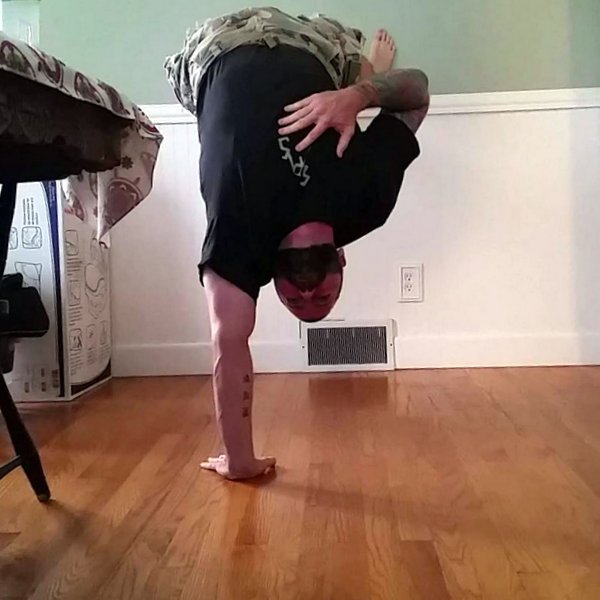
4) Make a physical schedule.
Write out your schedule and hold yourself accountable. It’s easy to forget objectives and schedules when they are just in your mind. It’s also easier to hold yourself less accountable.
5) Teach others what you have learned, and mistakes you have made. This last technique is a powerful way to stay motivated and positively focus on your goal by helping others who are also bettering themselves. You can teach what you have learned which will also intrinsically reinforce these ideas within yourself. You will feel more fulfilled in your work when you can see the motivation that you have helped create in others.
There are no set rules or sequences when using these five techniques, some may work better for you than others; you may find that leaning heavily on just one will be enough to help you maintain and work towards your goals. If you use just one or all five techniques, the main focus is still to maintain your game plan until you are able to effectively make a change and work through the initial need that started your journey.
After the fourth step, one of two things usually happens. You either complete the change and are able to physically and mentally shift your perception towards self betterment, or you start over again. You might begin again at the point of addressing the need for change, or you may deny there even is a need/problem. As stated earlier, these steps are cyclical in nature, and it is common to progress to one stage, and then regress to the stage before.
Change is continual motion. In the
action stage, you may realize that your game plan has some flaws, and you may have to re-address the plan. Or you may find that you are struggling to maintain your original game plan, and need to start back at the beginning to redefine your needs and goals. At that point it is important to acknowledge that this is a common occurrence when working to meet your needs. If there was an easy, not-so-challenging way to make it happen, then there would be no need for these four steps. But in reality, it never really works like that—our lives are not like sitcoms, and problems aren’t neatly wrapped up at the end of every 30 minute episode.

Actively making a lasting change takes work, and can be disheartening at times. You will probably make a few missteps from time to time, lapse on your game plan, and skip the gym for the comfort of Netflix and the couch. Or you may find yourself leaving your healthy food in the fridge at work and having the slices of pizza your company bought you. And that’s ok. The important part of the process, of these steps, and the journey, is that you don’t let a lapse of judgment turn into a full blown relapse. If you opt to have a donut (I’m from Massachusetts, donut will forever be spelled this way for me), don’t let it be the catalyst for pizza at lunch, then fries and chicken fingers for dinner. There is a huge difference between lapse and relapse, and that knowledge alone can propel you towards making a lasting change.
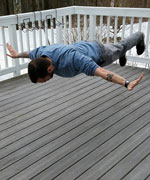 Steve Opalenik is a Licensed Mental Health Counselor, NASM Certified Personal Trainer, and Owner of Promethean Counseling. He can be contacted through his website www.prometheancounseling.com, or email: prometheanproject@gmail.com
Steve Opalenik is a Licensed Mental Health Counselor, NASM Certified Personal Trainer, and Owner of Promethean Counseling. He can be contacted through his website www.prometheancounseling.com, or email: prometheanproject@gmail.com
Back